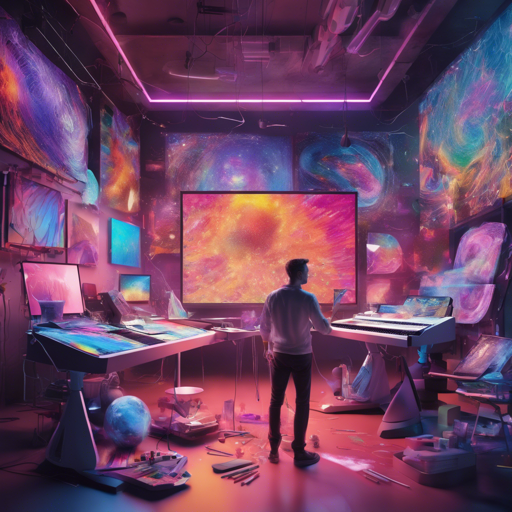In the world of artificial intelligence, the ability to generate high-quality images through sophisticated modeling techniques is a thrilling frontier. If you’re interested in exploring this exciting arena, you’ve come to the right place! In this article, we’ll walk you through the process of using exclusive AI models on the Mage.Space platform. By following these steps, you’ll be creating breathtaking images in no time!
Getting Started with AI Models
Before diving into the specifics, it’s crucial to familiarize yourself with the various models available. Here’s a quick overview:
- ParagonXL
- NovaXL
- NovaXL Lightning
- NovaXL V2
- NovaXL Pony
- NovaXL Pony Lightning
- RealDreamXL
- RealDreamXL Lightning
Generating Impressive Images
Creating images is akin to painting a masterpiece on a canvas—but instead of paint, you’re using prompts as brush strokes. Here’s how you can do it:
1. Formulating Your Prompt
The key to generating stunning images lies in the details of your prompt. Think of your prompt as a recipe, where the finer the ingredients, the tastier the dish!
Prompt: RAW photo, *subject*, (high detailed skin:1.2), 8k uhd, dslr, soft lighting, high quality, film grain, Fujifilm XT3Example Prompt
Consider this example: “RAW photo, a close-up portrait photo of a 26 y.o woman in wastelander clothes, long haircut, pale skin, slim body, background is city ruins, (high detailed skin:1.2), 8k uhd, dslr, soft lighting, high quality, film grain, Fujifilm XT3”. With the right ingredients, the AI models will create a breathtaking image that captures the essence of your description!
2. Negative Prompts
Negative prompts help guide the model away from undesired traits in the output. Think of it as removing unwanted items from your basket while shopping:
Negative Prompt: (deformed iris, deformed pupils, semi-realistic, cgi, 3d, render, sketch, cartoon, drawing, anime:1.4), text, close up, cropped, out of frame, worst quality, low quality, jpeg artifacts, ugly, duplicate, morbid, mutilated, extra fingers, mutated hands, poorly drawn hands, poorly drawn face, mutation, deformed, blurry, dehydrated, bad anatomy, bad proportions, extra limbs, cloned face, disfigured, gross proportions, malformed limbs, missing arms, missing legs, extra arms, extra legs, fused fingers, too many fingers, long neckAdvanced Settings for Best Output
Your results can be further tweaked by adjusting various settings including:
- Steps: Use Euler A or DPM++ with 25 steps for optimal clarity.
- CFG Scale: Adjust between 3.5 and 7 to refine the model’s compliance with your prompts.
- Hires Fix: Utilize a latent upscaler for enhanced resolution.
- Denoising Strength: Set between 0.25 and 0.45 for the best results.
Troubleshooting Tips
Creating these stunning images can sometimes lead to unexpected outcomes. Here are some troubleshooting steps to ensure you’re on the right track:
- Image Quality Issues: If your images are blurry, consider increasing the “Hires Fix” settings.
- Incorrect Outputs: Adjust your prompts for clarity and specifics. Think about what you might change in the recipe.
- Negative Prompts Not Working: Make sure you’re using clear and precise language in your negatives, just like specifying which ingredients to avoid.
For more insights, updates, or to collaborate on AI development projects, stay connected with fxis.ai.
Conclusion
With these guidelines, you’re now equipped to create breathtaking images using the power of AI. Dive into the world of AI image generation and let your creativity flow!
At fxis.ai, we believe that such advancements are crucial for the future of AI, as they enable more comprehensive and effective solutions. Our team is continually exploring new methodologies to push the envelope in artificial intelligence, ensuring that our clients benefit from the latest technological innovations.

